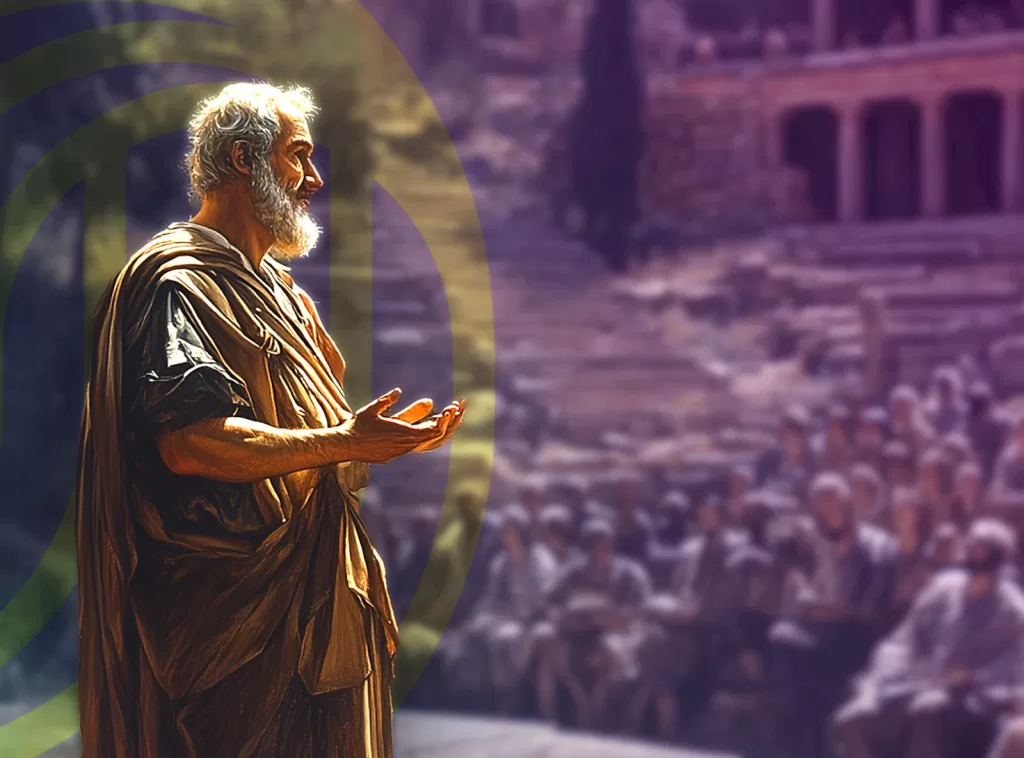Every customer journey, every campaign, every piece of messaging is a narrative in one way or another. What story is your marketing trying to tell?
To hear some marketers talk about it, storytelling is just one of many potential marketing tactics – and an optional one at that. Some go further, dismissing storytelling as little more than a style of content that becomes fashionable every now and then, like skinny jeans, mullets or Tom Jones. It’s a fad, a buzzword, a fluffy creative concept disconnected from marketing’s data-driven realities.
But marketing and storytelling are intrinsically, unavoidably linked. In a very real sense, marketing is storytelling. The reason is simple: storytelling is the language of the brain.
While we might like to think of the brain as some kind of super computer, the truth is that squishy off-white thing in our heads hasn’t evolved that much since our ancestors climbed down from the trees.
Humans have conveyed information with stories since ancient peoples first huddled around a campfire. Experience was handed down from generation to generation in the form of stories. Myths and legends all began as attempts to explain some truth or make sense of the world around us.
Story, as it turns out, was crucial to our evolution – more so than opposable thumbs. Opposable thumbs let us hang on; story told us what to hang on to.
Lisa Cron, Wired for Story (2012)
Stories allow us to explore unfamiliar scenarios, imagining possible outcomes and equipping us to make better decisions.
The brain also creates its own stories, forming narratives to understand the constant barrage of information; making connections, applying context and finding meaning.
All of this makes storytelling a very useful framework for marketers hoping to create content likely to resonate with the right people.
Of course, not all stories. If you’ve ever walked out of a movie, given up on a novel after a few chapters or even just zoned out when your uncle starts with the anecdotes, a good story is in the telling.
So what makes a compelling story and how can you apply this framework to your own marketing?
WHO is the story about?
A classic story will contain the same archetypal characters: hero, villain, mentor and so on.
You might characterise the customer problem as the villain, with all its attendant obstacles to be overcome by your product or service. But before you get carried away, I should point out that neither your brand nor your product is the hero of this story.
I hate to be the one to break it to you, but no one cares about your business or your product, except as a possible step on the way towards their goal. No one is interested in your brand history and how you grew from a plucky little startup unless it has a bearing on what they really care about. You are merely a means to an end.
Your marketing narrative needs to be about the customer; their needs, obstacles, goals and dreams.
For example, no one chooses to buy car tyres for the love of thick rubber. If you’re like me, you only ever think about tyres when the mechanic says they need replacing during the annual car inspection.
We buy tyres because we need to keep our cars on the road. And we need our cars because we want to go places.
The Michelin brothers understood this customer narrative, which is why they produced one of the most successful examples of content marketing in history — The Michelin Guide. Since 1900, Michelin has published travel guides that place the French tyre brand at the right point within the customer narrative to be relevant. Instead of trying to be the hero of the story, Michelin assumed the role of mentor.
In a story, the mentor advises and supports the hero to overcome the challenges and obstacles along the way to the goal. Think Yoda in Star Wars, Morpheus in The Matrix or Gandalf in Lord of the Rings. Trusted. Knowledgeable. Patient.
Positioning your brand or product as the hero of your marketing narrative effectively casts the customer in a passive background role. Your marketing becomes all about you, not the relationship between you and the customer.
When devising your messaging, planning your campaigns and developing your content, think of your brand as the mentor. Framing your brand as the mentor in the customer’s story focuses your marketing on that relationship, while putting their needs, their goals, their quests front and centre.
WHAT is the story about?
A good story or narrative needs to be about something. It can’t just be a bunch of stuff that happened.
Red Riding Hood hasn’t resonated through the generations because of a talking wolf in a nightdress. It’s a cautionary tale about obeying your parents, bewaring strangers and not straying from the path.
On one level, Jaws is about a massive shark eating people. On another level, Jaws is about overcoming your fears to face a threat head-on (Sheriff Brody), instead of burying your head in the sand and hoping it all goes away (the Mayor). That’s a universal theme we can all relate to.
And the Michelin Guide is about travel, packed with information and reviews on hotels, restaurants, holiday destinations and other places one might choose to drive in a car.
Consider the themes and messaging communicated by your own marketing. Is it just a bunch of stuff about your product or service? “Now available in red!” Or does every campaign, every blog post, every tagline present a key message that will resonate with your target audience? “Never be late for a meeting again!”
Keep your messaging simple. Your overall marketing narrative might involve multiple messages and themes – appealing to different people, different use cases and so on. But include too many themes or key takeaways in a story and suddenly the focus is lost. It’s no longer about anything, like a rambling anecdote that keeps going on tangents so you’re never quite sure what the point is.
Pick a theme and key message for each asset or campaign to give each story a laser focus.
WHY should anyone care?
Some stories are just boring. Sometimes, that might simply be because we’re not the target audience. I’m never going to find Peppa Pig gripping because there’s not much there for me to relate to. (Bluey on the other hand …)
However, the key reason why some stories just fail to hold an audience is because the stakes just aren’t high enough. If Red Riding Hood walked through the woods to Grandma’s house, successfully delivered the basket of food and returned home without any real sense of threat, it would still be a story. Things happen. There’s cause and effect. It just wouldn’t be very interesting.
Every story needs to have some element of uncertainty, some level of risk, some questions left unanswered right to the end. Otherwise why keep reading?
In Red Riding Hood, the stakes are literally life and death. People get eaten. That’s why we keep listening to the storyteller to find out if our heroine will meet the same fate.
Jaws isn’t gripping because it features a great white shark. There are millions of sharks out there, harming no one. But have that shark come close to the packed beach of Amity Island and suddenly the story has us hooked.
It’s not about the problem, or the product or even the customer. It’s about each in the context of the other. What’s at stake? How bad could it be if we don’t solve this problem? How life-changing would it be if we did? Why does this thing matter?
A happy ending means nothing if happiness was guaranteed from the first line. Happiness is relative. There needs to have been the risk of a very different outcome.
Ultimately, stories are about change. And so is whatever you’re offering. Thinking about your marketing, your customer journeys and your messaging in narrative terms can help you to highlight the change your offering makes possible.
And that makes it a lot easier to write a happy ending.




